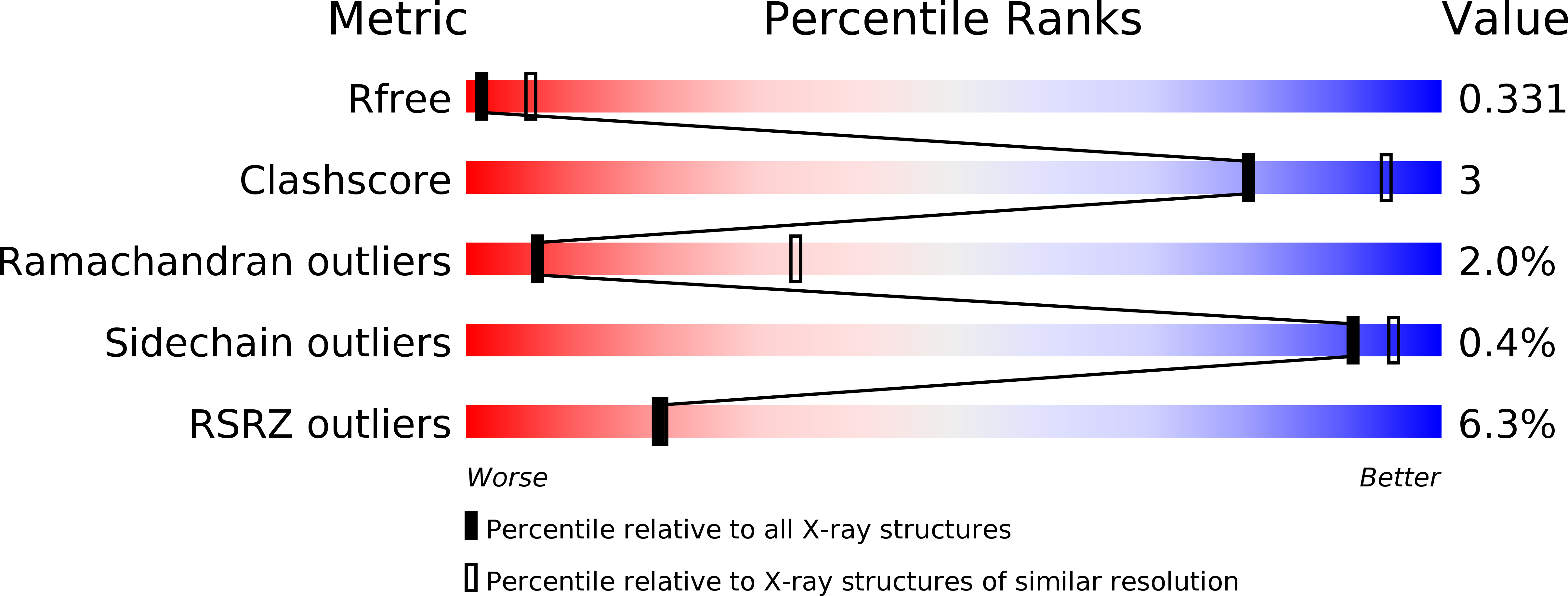An electrostatic mechanism for Ca(2+)-mediated regulation of gap junction channels.
Bennett, B.C., Purdy, M.D., Baker, K.A., Acharya, C., McIntire, W.E., Stevens, R.C., Zhang, Q., Harris, A.L., Abagyan, R., Yeager, M.(2016) Nat Commun 7: 8770-8770
- PubMed: 26753910
- DOI: https://doi.org/10.1038/ncomms9770
- Primary Citation of Related Structures:
5ER7, 5ERA - PubMed Abstract:
Gap junction channels mediate intercellular signalling that is crucial in tissue development, homeostasis and pathologic states such as cardiac arrhythmias, cancer and trauma. To explore the mechanism by which Ca(2+) blocks intercellular communication during tissue injury, we determined the X-ray crystal structures of the human Cx26 gap junction channel with and without bound Ca(2+). The two structures were nearly identical, ruling out both a large-scale structural change and a local steric constriction of the pore. Ca(2+) coordination sites reside at the interfaces between adjacent subunits, near the entrance to the extracellular gap, where local, side chain conformational rearrangements enable Ca(2+)chelation. Computational analysis revealed that Ca(2+)-binding generates a positive electrostatic barrier that substantially inhibits permeation of cations such as K(+) into the pore. Our results provide structural evidence for a unique mechanism of channel regulation: ionic conduction block via an electrostatic barrier rather than steric occlusion of the channel pore.
Organizational Affiliation:
Department of Molecular Physiology and Biological Physics, University of Virginia School of Medicine, Charlottesville, Virginia 22908, USA.

















